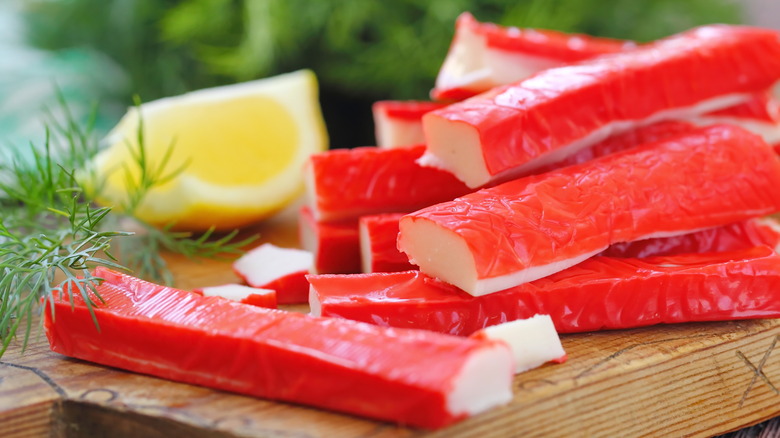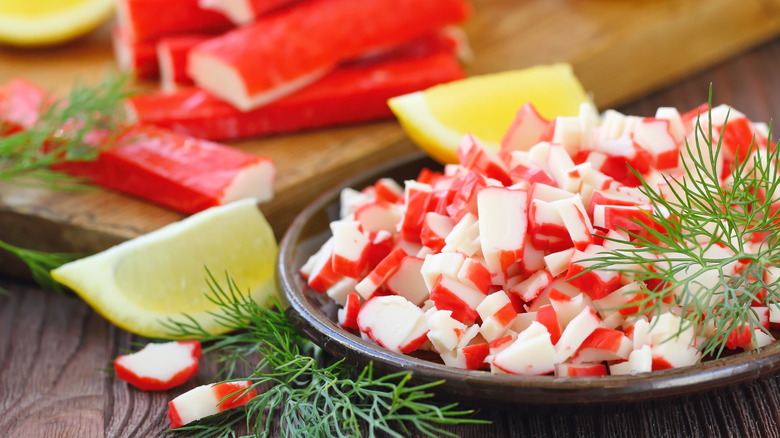Why Some Imitation Crab Is More Expensive Than Others
The name says it all: Imitation crab does not contain actual crab. That's what makes the seafood so affordable in comparison to the real stuff. But what if we told you this wasn't always the case — meaning, not all imitation crab was completely fake?
The popular ingredient was first "invented" in Japan in the 1970s, according to AllRecipes. The fake crab was initially developed as a substitute for the fundamental ingredient since true crab was so expensive. It made its way to the United States shortly after becoming popularized in Japan. By the 1980s, Americans were consuming roughly 135 million pounds of the fish-based "crab" each year. Imitation crab is often used in sushi, but it's become popular in other recipes, too. It's commonly used in crab rangoon, the cream cheese-based appetizer. Plus, the "sticks" can be eaten on their own as an appetizer, and served with sauces like cocktail or tartar.
The pricier imitation crab contains real crab meat
So, what is imitation crab? The salty seafood is traditionally made without any crab at all. According to Healthline, since crab is pricey, less expensive seafood options such as pollock are used in its place to create surimi (a fish paste) that serves as the imitation crab's base. The surimi is then bound with other ingredients, such as potatoes and egg whites. Sugar and vegetable oil is added as well for texture.
Though imitation crab was created as an affordable alternative, one type is more expensive than the rest — and it's found in Japan. According to The Takeout, some crab sticks in Japan actually do contain real crab. This is because the markets in the country pride themselves on using high-quality ingredients. As a result, the price of those crab sticks is more than those that don't contain the real deal. Keiko Kubo of JETRO, a Japanese trade organization, told The Takeout that this specific imitation crab costs more because it's "sushi grade." Still, Kubo added that most people prefer the fake crab to its natural counterpart because of its flavor.

